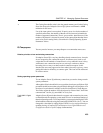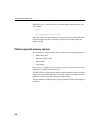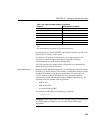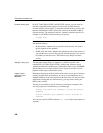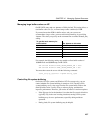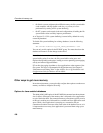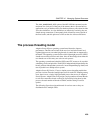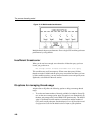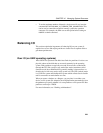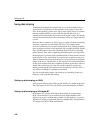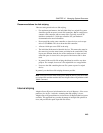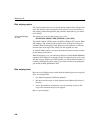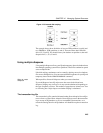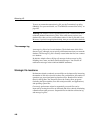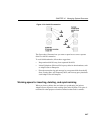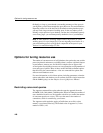
CHAPTER 12 Managing System Resources
441
• To set the maximum number of threads a single user will use, issue the
command
SET OPTION MAX_IQ_THREADS_PER_CONNECTION. This
can be used to control the amount of memory a particular operation
consumes. For example, the DBA can set this option before issuing an
INSERT or LOAD command.
Balancing I/O
This section explains the importance of balancing I/O on your system. It
explains how to use disk striping and how to locate files on separate disks to
gain better performance.
Raw I/O (on UNIX operating systems)
Most UNIX files systems divide disks into fixed size partitions. Partitions are
physical subsets of the disk that are accessed separately by the operating
system. Disk partitions are typically accessed in two modes: cooked mode
(through the UFS file system) or raw mode. Raw mode (sometimes called
character mode) does unbuffered I/O, generally making a data transfer to or
from the device with every read or write system call. The UFS (cooked) mode
is a UNIX file system and a buffered I/O system which collects data in a buffer
until it can transfer an entire buffer at a time.
When you create a database or a dbspace, you can place it on either a raw
device or a file system file. Adaptive Server IQ determines automatically from
the pathname you specify whether it is a raw partition or a file system file. Raw
partitions can be up to 128GB.
For more information, see “Working with databases”.



